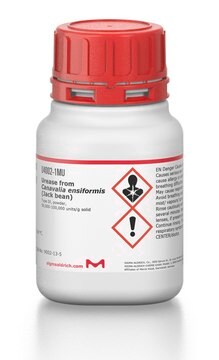Wichtige Dokumente
E5264
2-Ethyliden-1,5-dimethyl-3,3-diphenylpyrrolidin-perchlorat
analytical standard, for drug analysis
About This Item
Empfohlene Produkte
Qualität
analytical standard, for drug analysis
Qualitätsniveau
Arzneimittelkontrolle
regulated under CDSA - not available from Sigma-Aldrich Canada
Methode(n)
HPLC: suitable
gas chromatography (GC): suitable
Anwendung(en)
forensics and toxicology
veterinary
Format
neat
Lagertemp.
2-8°C
SMILES String
OCl(=O)(=O)=O.C\C=C1/N(C)C(C)CC1(c2ccccc2)c3ccccc3
InChI
1S/C20H23N.ClHO4/c1-4-19-20(15-16(2)21(19)3,17-11-7-5-8-12-17)18-13-9-6-10-14-18;2-1(3,4)5/h4-14,16H,15H2,1-3H3;(H,2,3,4,5)/b19-4-;
InChIKey
CBNJWAYHGKHAFJ-YOJQKEKBSA-N
Allgemeine Beschreibung
Anwendung
Lagerklassenschlüssel
11 - Combustible Solids
WGK
WGK 3
Flammpunkt (°F)
Not applicable
Flammpunkt (°C)
Not applicable
Persönliche Schutzausrüstung
Eyeshields, Gloves, type N95 (US)
Analysenzertifikate (COA)
Suchen Sie nach Analysenzertifikate (COA), indem Sie die Lot-/Chargennummer des Produkts eingeben. Lot- und Chargennummern sind auf dem Produktetikett hinter den Wörtern ‘Lot’ oder ‘Batch’ (Lot oder Charge) zu finden.
Besitzen Sie dieses Produkt bereits?
In der Dokumentenbibliothek finden Sie die Dokumentation zu den Produkten, die Sie kürzlich erworben haben.
Unser Team von Wissenschaftlern verfügt über Erfahrung in allen Forschungsbereichen einschließlich Life Science, Materialwissenschaften, chemischer Synthese, Chromatographie, Analytik und vielen mehr..
Setzen Sie sich mit dem technischen Dienst in Verbindung.